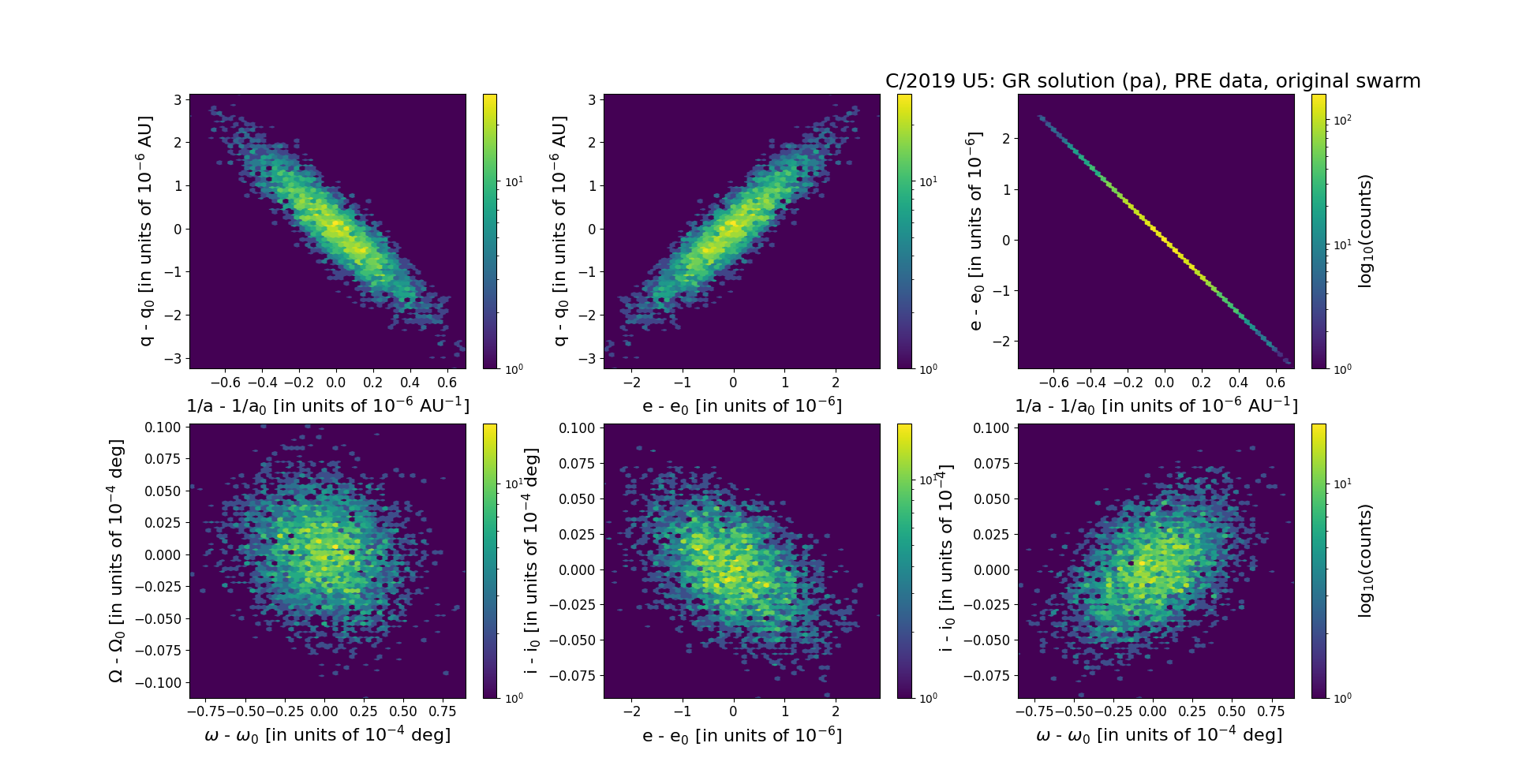C/2019 U5 PanSTARRS
more info
Comet C/2019 U5 was discovered on 22 October 2019, about 3.5 yr before its perihelion passage (10.38 au from the Sun). Later two pre-discovery observations were found from 11 October 2019 (heliocentric disctance: 10.45 au). In the moment of orbit determination, this comet was still observed.
Currently, solutions (GR and NG) based on pre-perihelion data are given. Therefore, the data arc span over 3.46 yr in a range of heliocentric distances from 10.45 au to 3.62 au.
This is Oort spike comet.
Currently, solutions (GR and NG) based on pre-perihelion data are given. Therefore, the data arc span over 3.46 yr in a range of heliocentric distances from 10.45 au to 3.62 au.
This is Oort spike comet.
| solution description | ||
|---|---|---|
| number of observations | 3637 | |
| data interval | 2019 10 11 – 2023 03 29 | |
| data arc selection | data generally limited to pre-perihelion (PRE) | |
| range of heliocentric distances | 10.45 au – 3.62 au (perihelion) – 3.62 au | |
| detectability of NG effects in the comet's motion | comet with NG effects strongly manifested in positional data fitting | |
| type of model of motion | GR - gravitational orbit | |
| data weighting | YES | |
| number of residuals | 7235 | |
| RMS [arcseconds] | 0.35 | |
| orbit quality class | 1a+ | |
| orbital elements (barycentric ecliptic J2000) | ||
|---|---|---|
| Epoch | 1720 01 05 | |
| perihelion date | 2023 03 29.38612211 | ± 0.00011692 |
| perihelion distance [au] | 3.63082686 | ± 0.00000095 |
| eccentricity | 0.99986704 | ± 0.00000079 |
| argument of perihelion [°] | 181.493357 | ± 0.000024 |
| ascending node [°] | 2.654324 | ± 0.000003 |
| inclination [°] | 113.470499 | ± 0.000003 |
| reciprocal semi-major axis [10-6 au-1] | 36.62 | ± 0.22 |
| file containing 5001 VCs swarm |
|---|
| 2019u5pa.bmi |

